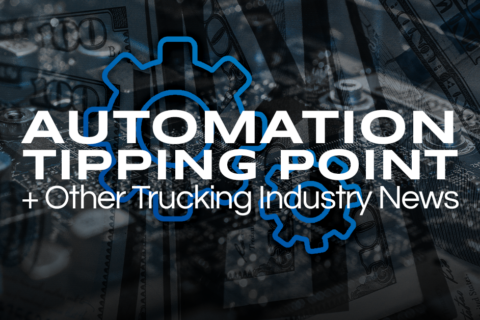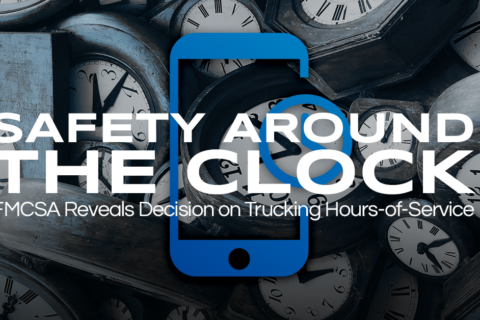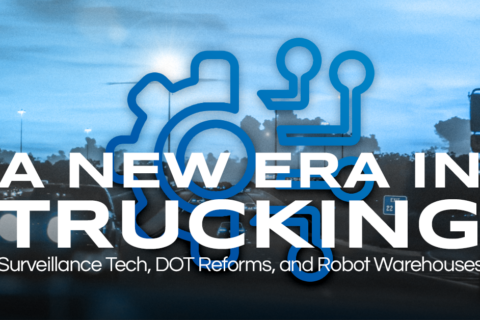Automation Tipping Points, Innovative Battery-Swaps, and Yellow’s Bankruptcy: Another Week in Trucking
Happy Friday! Welcome back to another curated selection of the industry’s top stories this week! The spotlight falls on three key areas: the changing tides in self-driving technology, the looming financial woes of freight carrier Yellow, and the exciting potential of battery-swap technology for electric vehicles. As Waymo places its trucking division on hold, we explore the impacts and implications of this move for the future of self-driving trucking. We also delve into the struggles and looming bankruptcy of freight carrier Yellow, presenting a cautionary tale for the industry. But amidst these challenges, innovative solutions are emerging, such as the collaboration between Ample and Mitsubishi Fuso to introduce battery-swap technology into electric trucking. Let’s get into it! Shift in Self-Driving Technology Focus Waymo, a leading contender in the self-driving vehicle space, has decided to put its trucking division, Waymo Via, on hold. This news follows some layoffs earlier this year within the division. In stark contrast, Aurora, a company headed by ex-Waymo engineer Chris Urmson, announced a successful round of funding, raising $800M to double down on their autonomous trucking division. Despite having no revenue and losing significant value since going public through a SPAC, Aurora is determined to push forward, sparking questions about its viability in the future. The Trade-offs of Autonomous Trucking The self-driving trucking industry has seen various players come and go. A handful of operations, startups such as tuSimple and Embark have shuttered their operations, while Peloton and Locamotion have faced failure. Meanwhile, companies like Kodiak have resorted to military contracts in order to stay afloat, whereas Gatik and Einride are seemingly performing well despite the apparent failure rate. The complexity of trucking presents unique challenges for self-driving technology. On one hand, freeway driving is simpler compared to urban driving. On the other hand, the stakes are high, given the fast speeds, high kinetic energy of class 8 semi-trucks, and the potential for significant damage even from minor errors. The Human Element in Autonomous Trucking The adoption of self-driving technology also raises employment concerns. The trucking industry has over 100,000 job openings, with a high turnover rate. Although the integration of robots isn’t likely to eliminate jobs anytime soon, fears persist, especially since truck driving is a career for many. Unions such as the Teamsters are pushing back against autonomous technology, even promoting a law that could ban unmanned self-driving trucks in California. The Future of Autonomous Trucking Despite Waymo’s decision to pause its trucking efforts, the company’s technology for cars isn’t significantly different from that for trucks. Thus, any advancements made for their taxi service can potentially be applied to trucking in the future. In the meantime, Waymo is opting for a “laser focus” on ride-hailing, with a planned expansion in Los Angeles. Aurora, on the other hand, sees Waymo’s departure from the trucking space as a potential boost for its own operations, if it can effectively navigate the complex terrain of autonomous trucking. 🔗 Explore the shifting landscape of autonomous trucking Yellow Eyes Bankruptcy Amid Labor Dispute and Customer Exodus Yellow, one of the largest freight carriers in the US, is on the brink of filing for bankruptcy due to a cash crunch, customer flight, and contentious union negotiations. As customers opt for other operators due to the perceived risk of operation disruption from a looming labor dispute, Yellow is hemorrhaging shipments by the thousands. Although the company managed to avert a planned strike by the Teamsters union that represents most of its workforce, customer attrition continues unabated. Yellow has experienced a drastic 80% fall in freight volumes recently, as per a research report by TD Cowen. Debt and Decline: Yellow’s Struggles Amid a Falling Freight Market The potential bankruptcy filing of Yellow draws attention once again to the $700 million Covid-19 rescue loan it received from US taxpayers in 2020. Already under scrutiny from a congressional probe that concluded the Treasury Department erroneously issued the loan on national-security grounds, Yellow’s financial issues are compounded by $1.3 billion in debt maturities looming next year. The company’s liquidity woes have grown over the year as a decrease in shipping demand slashed freight volumes and drove rates down. Yellow’s cash holdings have dipped from $235 million at the end of last year to around $100 million by the end of June. 🔗 Read the full article here Ample and Mitsubishi Fuso Unleash Battery Swap Tech Ample, known for its innovative battery swap station that can change out an electric vehicle’s battery in merely five minutes, is now collaborating with Mitsubishi Fuso. Their collective aim is to integrate this rapid battery swapping technology into the realm of electric trucking. The system involves electric vehicles equipped with Ample’s modular battery packs, which are easily replaced at the swap station, making the process far quicker and more efficient than traditional charging. Fuso eCanter Trucks to Leverage Ample’s High-Speed Battery Swap To meet the demanding needs of last-mile delivery companies, who can ill afford lengthy vehicle downtime for recharging, Ample’s technology presents an appealing alternative. The quick-swap battery modules will be installed in a series of Fuso eCanter electric trucks in Japan, set for deployment later this year. These trucks are expected to deliver a range of 62 to 200 miles before requiring a visit to a swap station for a swift, “gas-station-like experience.” While the truck enjoys its five-minute pit stop, it can be simultaneously loaded with goods for the next delivery run. Furthermore, Ample is actively exploring options to provide even longer-range alternatives, thereby further enhancing its offerings in inner-city logistics. 🔗 Read the full article here Before you hit the road… This week’s stories illustrate the dynamic trucking landscape, marked by significant challenges, industry shifts, and innovative solutions. From the ongoing evolution of autonomous trucking technology to the potential bankruptcy of a major freight carrier, the changes are as varied as they are impactful. But amidst the turbulence, innovation persists, as evident in the new collaboration between Ample and Mitsubishi Fuso. Your thoughts and insights are…









Recent Comments